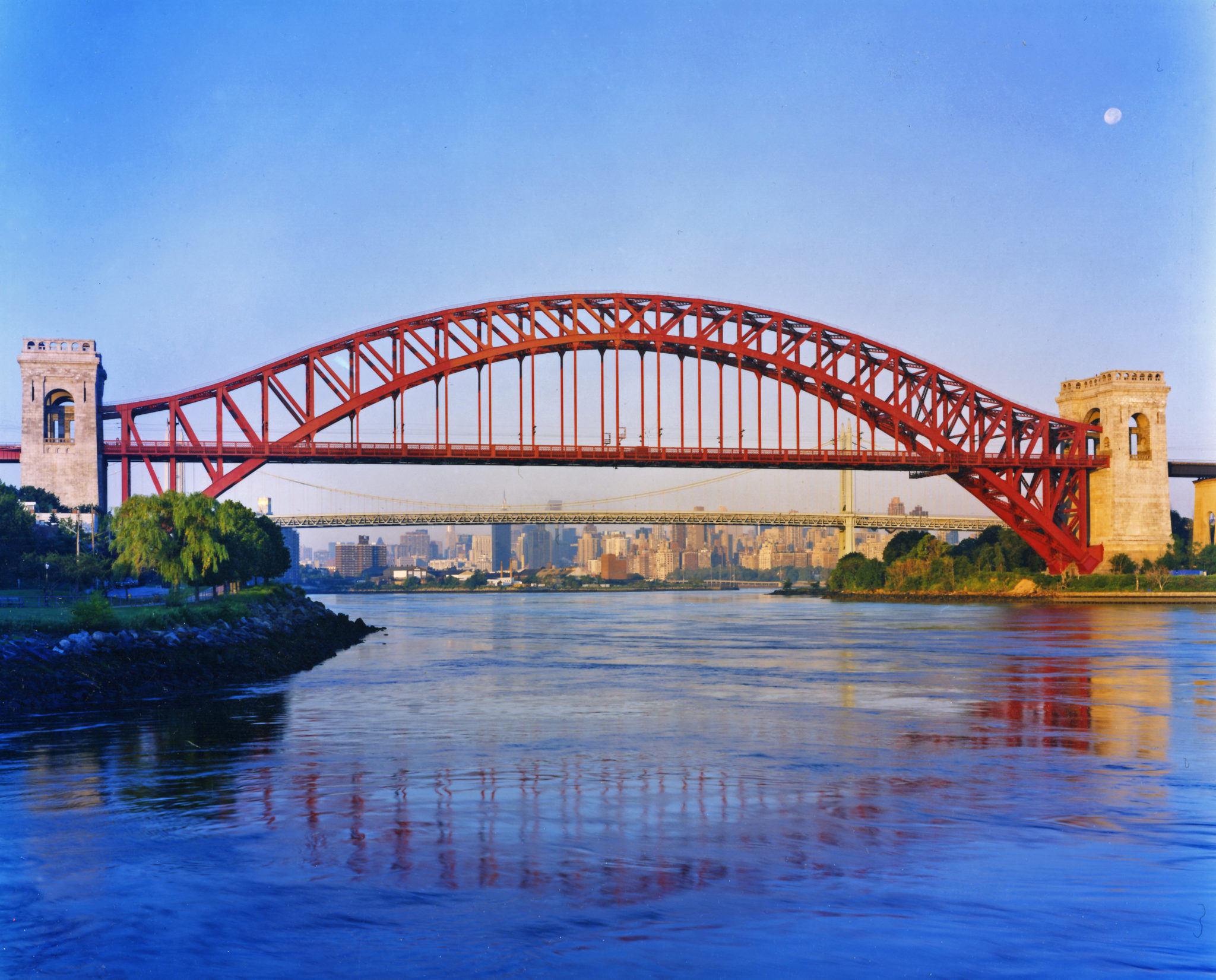Hell Gate Bridge Celebrates 100 Years
At the start of the 20th century, the Hell Gate Bridge over the East River was designed to be the final critical link in what would become the modern Northeast Corridor (NEC), connecting Boston to Washington, D.C. by an all-rail route passing through the heart of New York City.
From its inception, the Hell Gate Bridge has transformed the way people and goods move through the nation’s largest metropolis. Today, more than 40 Amtrak Northeast Regional and Acela Express trains cross the bridge each day, rewarding customers with breathtaking views of the Empire City’s world-famous skyline.
Designed by engineer Gustav Lindenthal and architect Henry Hornbostel, the Hell Gate Bridge contains 20,000 tons of steel, and spans 1,107 feet from the shore of Astoria to the Bronx via Wards and Randall’s islands. Given its prominence along the skyline, the designers hoped to marry practicality with elegance by transforming the bridge into a useful piece of public art. Although often overshadowed by the equally famous Brooklyn and Williamsburg bridges, the Hell Gate Bridge was said to have served as inspiration for the Sydney Harbour Bridge in Australia. At the time of its completion in 1916, it was the longest steel arch bridge in the world, and “designed to last 1,000 years.”
“The Hell Gate Bridge is heavily built and so robust, it will continue to serve trains for probably the next several hundred years,” says Jim Richter, Amtrak’s deputy chief engineer of structures. “Most railroad bridges are very utilitarian, but the Hell Gate was designed and built to really become a masterpiece, a monument.”
Investing In the Next 100 Years of Rail Travel
Photo by Dave Frieder
As we celebrate the iconic bridge, we are also looking ahead to the next 100 years of rail travel in the northeast region. Along with state and federal partners, Amtrak is investing in the vital Gateway Program, a comprehensive plan to modernize and increase track, tunnel, bridge, and station capacity in the New York-New Jersey area, ultimately resulting in greater levels of service and added operational reliability. Like the Hell Gate Bridge, the introduction of this infrastructure will dramatically change the future of the region by eliminating the bottleneck in New York, and continuing a long tradition of bringing vital intercity and commuter services to the metropolitan region and beyond.
For more on the storied history of the Hell Gate Bridge, visit the Amtrak History blog and The Northeast Corridor blog.






